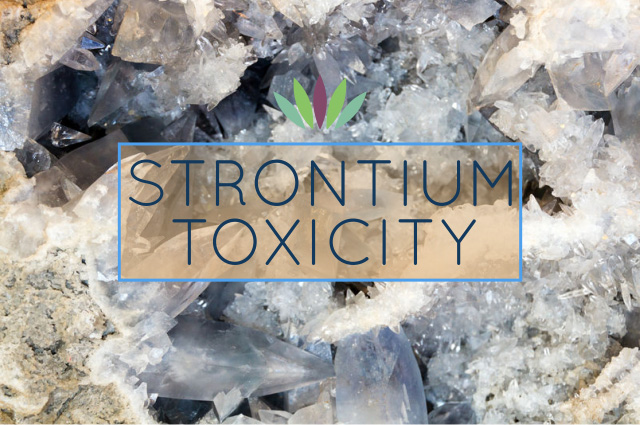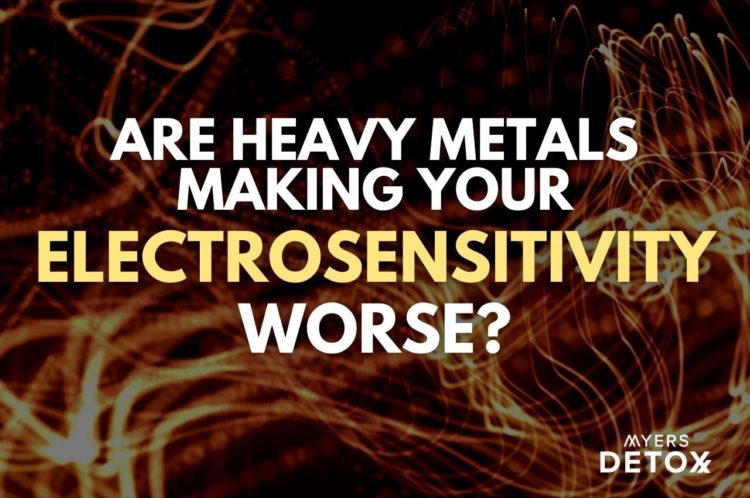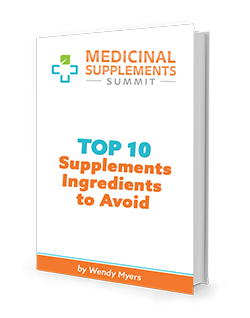Strontium Toxicity

Strontium is found as a non-radioactive element; but in addition to its stable, natural forms, there are also radioactive ones. Toxicity of this metal is incredibly dangerous, as it displaces calcium and primarily targets bone health.
Plus, in the case of radioactive strontium, it acts as a human carcinogen! While most of the strontium to which we are exposed on a daily basis is not radioactive or permanently damaging, it’s still poses a great threat to our health.
Identify the presence of this toxic mineral and, with Myers Detox you can detox your body from this dangerous element!
Sources of Strontium
The most common forms of strontium exposure are environmental and medical (1). We are all exposed to strontium in varying levels, but if you work in one of the following industries, you will have an increased risk of strontium toxicity (3, 4):
- Glass making
- Ceramic making
- Municipal landfill operations
- Scrap metal sorting, sales and brokerage
- Metal melting and casting
- Mining
- Nuclear waste facilities
Strontium exists in two types: natural and man-made. Each natural form of strontium is stable and non-radioactive. Various amounts of natural strontium exist in pretty much everything from rocks and soil to animals and plants (1).
But in addition to its stable forms, strontium can also exist as radioactive isotopes, the most powerful of which is strontium-90, which is a common product of nuclear explosions (1, 9). In the medical field, strontium-90 is used as a radioactive tracer and for cancer therapy (11). Controlled amounts have also been used in the treatment for bone cancer, as well as treatments for certain eye diseases.
Strontium and its compounds can be found in such things as (1, 4, 5, 8, 11):
- Air pollution
- Cathode ray tubes for televisions
- Ceramic glazes and ceramic making
- Coal burning
- Dairy products
- Dust and rocks
- Fish
- Glass making
- Leafy vegetables
- Livestock
- Making of fluorescent lights
- Some medicines
- Metal melting and casting
- Mining
- Municipal landfill operations
- Nuclear waste facilities
- Oil
- Paint pigments
- Pyrotechnics
- Scrap metal work (sorting, sales, and brokerage)
- Soil
- Surface and underground water
- Waste from nuclear power reactors
Industrial waste, as always, is a huge factor in our exposure to toxic metals. In the case of strontium, one example is that of mining wastewaters. A study found that the water and sediment impacted by gypsum mining contained increased levels of heavy metals, the highest of which was strontium. When evaluating Gammarus balcanicus (an amphipod) found in the waters in the affected area, it was discovered that the specimens had suffered, “degraded exoskeleton(s)” with “altered permeability” (8).
As if damage to our soil, surface water, and underground water weren’t enough (not to mention all of the implications as to how that affects our plants, food, and livestock), there is an even more alarming fact: There is not a single national water-quality guideline for strontium when it comes to the protection of freshwater aquatic life in North America, nor anywhere else (6).
You can see why food and drinking water are the largest sources of exposure to strontium! Because of the nature of this metal, all of us are constantly exposed to it in small amounts. It can happen by eating food or drinking water (as just mentioned); or breathing in air and dust that contains strontium (1). Given this reality, it’s important to make sure you detox strontium and all the other metals so ubiquitous in our environment.
Symptoms of Strontium Toxicity
Strontium toxicity occurs when high levels of the element are accumulated in the body. The International Agency for Research on Cancer (IARC) and the Environmental Protection Agency have both determined that radioactive strontium is a carcinogen, due to the fact that it emits beta radiation (1).
Some of the symptoms associated with strontium toxicity include (3):
- Chronic renal failure
- Bone diseases
- Bone deformities
- Impaired bone growth
- Bone tumors
Excessive amounts of strontium are highly damaging to human health in the case of anyone. But in the case of children, the damage could be even worse, as their skeletal system is still developing. This puts young children at an increased risk of strontium toxicity and makes them more susceptible to its adverse health effects (5).
Toxic elements, like strontium, replace nutrient minerals in enzyme binding sites. When this occurs, the metals inhibit, over-stimulate, or otherwise alter thousands of enzymes. An affected enzyme may operate at 5% of normal activity. This may contribute to many health conditions. Toxic metals may also replace other substances in other tissue structures. The replacement weakens these tissues, such as the arteries, joints, bones, and muscles. Toxic metals may also simply deposit in many sites, causing local irritation and other toxic effects.
This is why if your body is not getting enough calcium, protein, or vitamin D, it will simply absorb more and more strontium to fill in what’s missing. See why mineral balancing is so important!
Health Conditions Caused by Strontium Toxicity
Strontium displaces calcium. Since the two have a similar chemical makeup, the body deals with them in much the same way. Like calcium, strontium is absorbed primarily through the gastrointestinal tract and concentrated in the bones and bone marrow.
So, when one is nutritionally deficient in calcium, the body may fill this “nutritional gap” by absorbing strontium. Over time, as more and more strontium is accumulated, toxic levels are reached (3). This phenomenon can be seen on a hair mineral analysis.
The kidney is the primary mechanism used in eliminating strontium from the body. As a result, those with renal failure or diabetes are at an increased risk for strontium toxicity, since the kidneys are not able to properly detox the body from this dangerous metal.
A study conducted at Hôpital Lariboisière in Paris found that, “high doses of strontium induced alterations of mineralization and, in a rat model of chronic renal failure, this induced a 160-fold accumulation of strontium in bone” (2).
Some of the many adverse health conditions caused by this toxic metal include (1, 2, 3, 4, 5):
- Osteomalacia
- Osteoporosis
- Bone cancer
- Leukemia
- Bone tumors
- Impaired bone growth
- Renal failure
- Skin cancer
- Cancer of the nose and lung (when inhaled)
- Death
In the case of the highly radioactive strontium-90, over-exposure can be deadly. Strontium-90 has a long half-life. Over time, the radiation emitted from it’s beta decay can accumulate in the bones and affect the production of new blood cells, eventually leading to death (9).
At toxic levels, strontium is very dangerous. The metal accumulates in the skeletal system, thus displacing the calcium your body actually needs to properly function and be strong. As in the case of most metal exposures, young children, as well as pregnant and lactating women, are more sensitive to excessive strontium intake (3, 10). But you can detox this metal and fight back by balancing your body’s minerals!
How to Support Your Body’s Natural Detox Mechanisms Against Strontium
A critical factor in strontium toxicity is inadequate calcium intake (3).
The following elements can help facilitate the body’s natural excretion of the strontium from your system (3, 5):
- Calcium
- Vitamin D
- Phosphorus
- Protein
A body that is well balanced in its amounts of vitamin D, calcium, and protein will be one that is well protected from strontium toxicity. As such, a balanced diet rich in minerals is crucial to maintaining optimal health, as well as reduce the amount of ingested strontium that is absorbed into the body (1, 3).
Detecting Strontium Toxicity
Everyone has stable strontium in his or her body. But it’s not always at safe levels.
If you think you’ve been exposed to this pollutant and may have high levels of it in your system, I recommended some testing to determine your level of exposure.
A Hair Tissue Mineral Analysis (HTMA). HTMA testing measures heavy metal and mineral concentrations in your hair, which is one of the most common places that heavy metals like to hide. It’s a good way to get a highly accurate snapshot of what’s going on in your body without invasive procedures or expensive scans.
When reviewing your Hair Tissue Mineral Analysis, keep in mind that the ideal hair strontium level is .008-0.01 mg% (12).
The HTMA testing process is simple (you don’t even need to leave your house). You get a digital kit sent to your email, then you send in your hair sample, and get your results within a few weeks. Testing is both accurate and comprehensive –– an HTMA test will give you information about a wide variety of heavy metals, including strontium.
Once you have your HTMA test results, you can look at them with a trained practitioner and come up with a personalized plan to support your body’s natural detoxification.
If you think you’ve been exposed to health hazards like strontium and it may be hiding in your system, order a Hair Tissue Mineral Analysis. From there, you can plan your next steps to reclaim your vitality.
Takeaway
Presently, humanity is exposed to the highest levels of toxic metals in recorded history, up to several thousand times higher than even several hundred years ago due to industrialization. The danger of toxic metals in our environment is greatly aggravated due to low mineral content of our food supply, as well as the contamination of our food supply.
If one does not consume preferred minerals in the diet, the body will pick up whatever toxic metals it can from the food, air, and water as substitutes. A key principle to remember is that an abundance of essential minerals in the diet protects the body against toxic metals.
If you are concerned about strontium exposure, an HTMA is a great place to start. It can give you the information you need to address the root causes of physical and mental health issues. If you suspect you have a build-up of toxins or a micronutrient imbalance, or you have unexplained symptoms like brain fog, weight gain, fatigue, or hair loss, you will certainly benefit from getting an HTMA.
After a long search and after having worked with multiple labs, I send all of our hair samples to an internationally-recognized lab that is a world leader in HTMA laboratory services. They’ve run more than 100,000 tests, and they process hair samples without washing them, which sets them apart from many other labs (washing a sample removes minerals, which leads to inaccurate results for proper interpretation).
If you think you may have toxin build-up or a mineral imbalance and you want definitive, accurate data on your health, you can order your HTMA here.
*These statements have not been reviewed by the FDA. A Hair Mineral Analysis (HTMA) is not intended to diagnose, treat, cure, reverse, or prevent any disease. It is not intended to replace any other medical test(s) that may be prescribed by your medical doctor.








